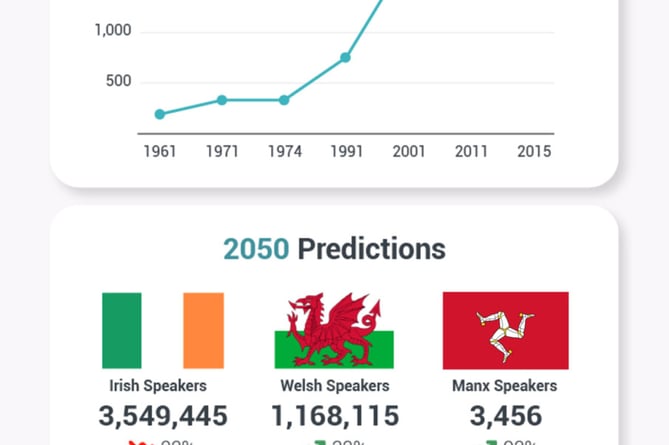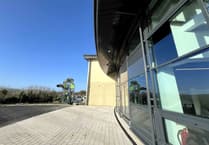Research into the growth of languages around the world has revealed the expected surge for Manx in the next few decades.
It is estimated that today there are more than 7,139 languages spoken in the world, including some newly born and others on the verge of extinction.
The Manx language is expected to increase in usage up to 92% by 2050.
That’s according to new research by e-learning platform Preply.
The company estimate that the number of Manx speakers will rise to 3,456 by 2050, from an estimated 1,800 in 2015.
Manx has seen a steady increase in its number of speakers since 1974, due in part to its resurgence in primary and secondary schools.
Earlier this year, the Bunscoill Ghaelgagh celebrated 20 years since it opened its doors. The school is the only one in the world where children are taught their lessons solely in Manx.
The aim is that children who attend the school are able to learn the language fluently, something which continues to be a success.
At the time, Isle of Man Newspapers spoke to head teacher Julie Matthews about the anniversary.
She said: ’The Manx language is so important to our culture and identity and it’s wonderful to see how it has enriched the lives of a succession of pupils and their families as they followed their primary curriculum through Manx.
’We are in a lovely situation now where former pupils regularly come back and help current students in the classroom.’
More recently, two new Manx parent and toddler groups started up in Braddan and Castletown, in addition to a group in St John’s run by Mooinjer Veggey, the Manx Education charity and supported by Culture Vannin.
The groups are organised by Possan Cloie - a ’pre-school parents and tots group for those wishing to find out about the Manx language, learn with their little ones and practice with other learners’.
They see some go on to attend the Bunscoill to be taught exclusively in Manx.
Meanwhile, Welsh is expected to surpass 1 million native speakers by 2050.
This is accredited to the fact that the Welsh government has launched a strategy for the promotion of this language called Cymraeg 2050.
On the other hand, the company argued that ’there are many chances that the number of Irish speakers will decrease by 2050’.
According to Census data, the use of Irish has only grown by 167,150 speakers since 1861.
To predict the number of native speakers for every language in 2050 Preply used historical data available online, and applied them to both exponential and linear growth models.
These growth models are a calculated prediction that takes into account two different types of growth - stagnant versus increasing growth.
With these models, they obtained two results of possible prediction. The result that was closer to the most recent figure of the historical data has been chosen as their prediction.




